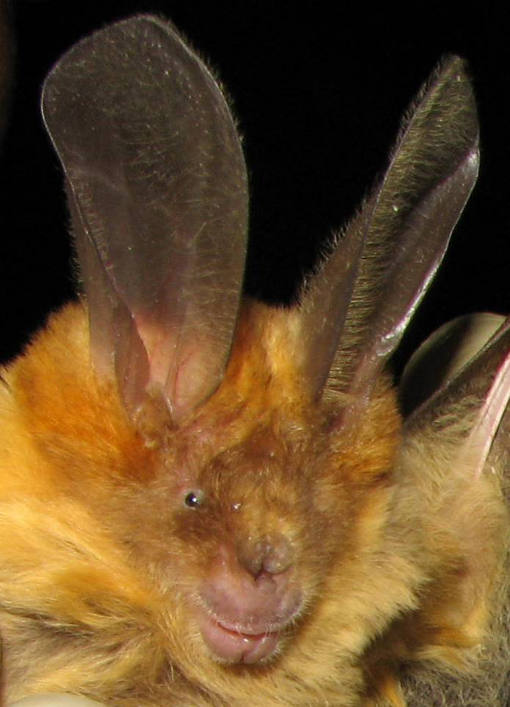Cave Bats of Gauteng
Cave Bats of Gauteng
Natal Long-fingered Bat
(Miniopterus natalensis)

The most common and widespread cave bat in southern Africa, it is named for the long finger bone which extends its wing to resemble that of a swallow. Like these birds, long-fingered bats spend a lot of time flying swiftly high above, and often forage low over water and drink from it by skimming the surface. An alternative name for this family is the clinging bat due to its habit of clinging together with others in clumps.
Medium sized, they roost in caves almost exclusively and can be found in large colonies of hundreds of thousands. An intriguing fact about these bats is that studies have shown that in winter some of them migrate from the warmer north-west regions to caves in Gauteng in order to hibernate. They then return in summer to breed.
Due to their preference for soft-bodied insects, especially moths, they are an invaluable asset in the control of agricultural pests.

Geoffroy’s Horseshoe Bat
(Rhinolophus clivosus)
Widespread and commonly found in the temperate regions of southern Africa, this cave bat tolerates a range of habitats. It is suspected that it is not just one species and there may actually be as many as four different kinds that resemble each other very closely.
They are medium sized and their strange ‘nose leaves’ allow them to practice very sophisticated sonar (echolocation) in order to navigate and capture their prey of moths, beetles and other insects.
They usually roost in groups of between about a dozen, and up to colonies of hundreds, either in true caves or old mine tunnels, and may occasionally use dark abandoned buildings.
Temminck’s Hairy Bat
(Myotis tricolor)
This attractive medium-sized bat with its ginger fur, is not too fussy about habitat. It may be found in mountain grasslands, fynbos, savannah or riverine woodland, often feeding over water.
It roosts almost exclusively in caves in groups of a few individuals up to colonies of a few hundred.
Thus the requirement of caves to roost appears to be more important than the type of biome.
They are known to migrate to warmer areas in the summer and colder areas in the winter. This is the opposite of birds and is not unusual amongst bats.
They feed on various insects such as beetles and flies.


Egyptian Slit-faced Bat
(Nycteris thebaica)
The incredible ears and slit in the nose of this bat make it immediately recognizable.
These special creatures have a number skills. Their sonar is purposefully kept very soft so that insects that can hear bat calls (many moths in particular), cannot hear a hunting slit-faced bat until it is too late. The large ears are also extremely sensitive to other prey sounds such as rustling in leaves which allow them to locate anything from moths to crickets to sun spiders and scorpions.
Slit-faced bats are seldom captured in the standard devices of scientists (mistnets and harp traps) because their sonar is usually too sensitive to be fooled. They are therefore typically caught within their roosts which are large or small cavities, such as caves, hollows between large boulders, hollow trees, abandoned buildings and aardvark burrows. Since these cavities may be some distance from their foraging area, these bats often have temporary feeding stations which are sheltered sites (e.g. in a tree or abandoned building) used to consume their prey. Such sites are known as night roosts and can be identified by patches of droppings together the unconsumed remains of insects such as moth wings, katydid legs and even scorpion stings.
Bushveld Horseshoe Bat
(Rhinolophus simulator)
As its name implies, this horseshoe bat is normally found in the warmer savannah and woodland areas of the country but is sometimes found in the caves and old mine tunnels of Gauteng. It is smaller than Geoffroy’s horseshoe bat and is also less fussy about roost sites, often being found in the hollow spaces between large boulders.
It uses sophisticated sonar to hunt its prey which consists of moths and other insects such as beetles.
With short broad wings its flight is very agile in the cluttered woodland environment where it likes to feed.

